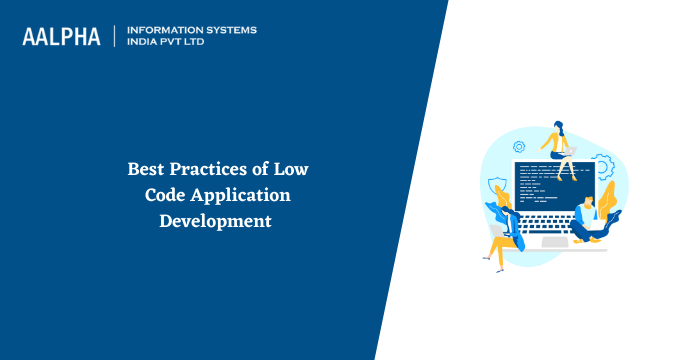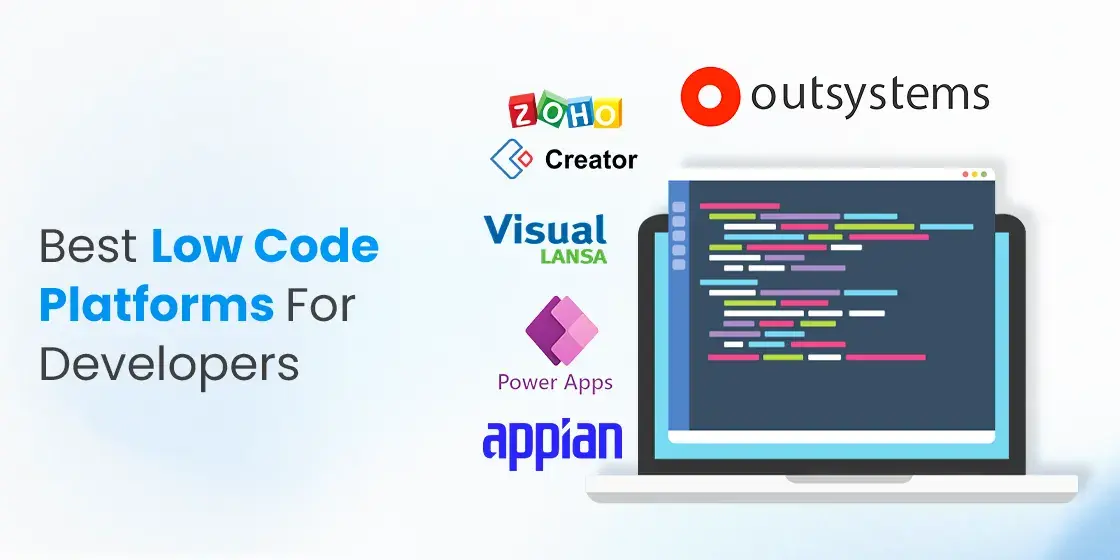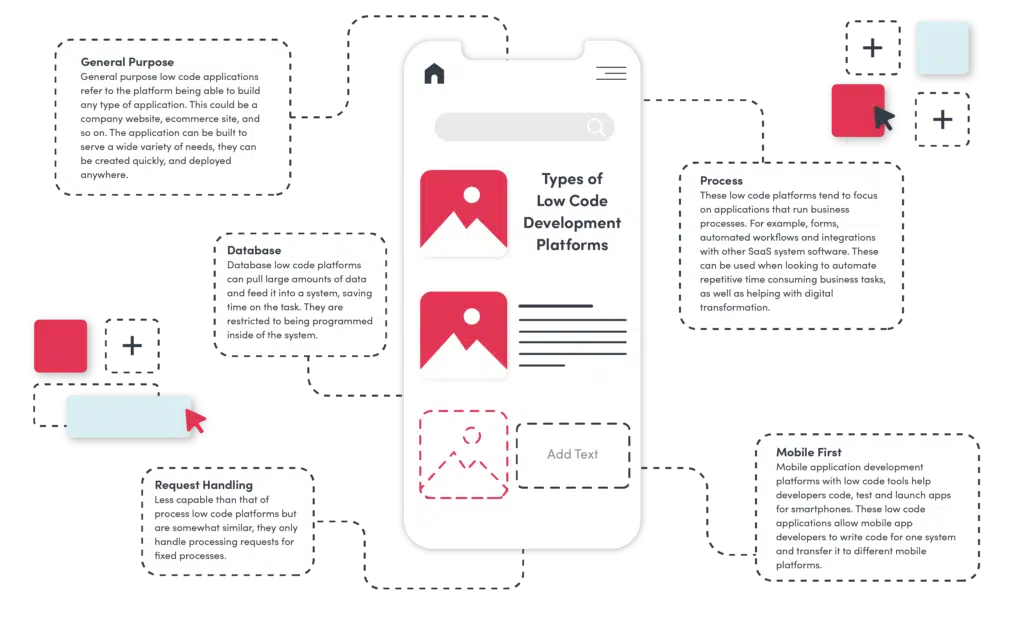Best Tips On Deciding On application development with Low-code platforms
Best Tips On Deciding On application development with Low-code platforms
Blog Article
Benefits Of Application Development With Low-Code In Terms Of Integration Capabilities
Low-code applications provide significant advantages in terms of integration which is vital when developing applications that can seamlessly connect to various systems and service. Here are key benefits from connectors that are pre-built, APIs, and other tools:
Wide Selection of Connectors. Low-code systems typically include a wide range of built-in connections to business systems that are well-known (e.g. cloud services, databases and CRM). This simplifies the process of connecting these systems.
API Integration: Many low-code platforms include integrated APIs that are built-in that let developers easily connect with external data sources and services.
User-Friendliness
Drag-and -Drop integration: Integration tasks are often done using drag and drop interfaces. Developers and non-developers are able to set up complex integrated systems without writing code.
Visual Workflow Builders: Visual tools for designing workflows and data flows aid in understanding and establishing integrations more intuitively.
Standardized Integration Methods:
SOAP and RESTful Service: Support for standard web services protocols like SOAP and REST allows for straightforward integration with a wide variety of external software and systems.
OData and other Standards: The support for standards like OData allows access and manipulation of data across different platforms and applications.
Real-Time Data Synchronization:
Real-Time Integrations: Low-code systems can handle real-time data sync between applications and systems. This makes sure that the data is up to date and consistent across the entire organization.
Event-Driven Architectures: Certain platforms offer event-driven architectures that enable applications to respond in real-time when events occur, which is essential for dynamic applications.
Legacy System Integration:
Low-code platforms: These platforms can be used to connect old systems to new systems. They are a great option to upgrade your IT infrastructure without having to overhaul everything.
Data Migration Tools - Built-in data migration tools make it easy to move data from old systems to applications that use low-code.
Integration of Third-Party Services:
Cloud Services Integration: The seamless integration of cloud services, such as AWS Azure, Google Cloud facilitates the easy deployment and scale-up of applications.
Business Applications Integration : Low-code platform can integrate with diverse business applications, including Salesforce.com, SAP, Microsoft Dynamics and many more for seamless workflow across various business processes.
Simplified management of data:
Unified Data models: Certain low-code platforms provide unified data models that makes data integration and management across different systems.
Data connectors: Preconfigured data connectors allow easy access and modification to data from multiple sources.
Security and Compliance
Low-code platforms make sure that integrations comply with security standards and protocols and safeguarding data while it is in transit and while it is in rest.
The platforms include features to ensure that integrations are compatible to regulatory standards.
Extensibility:
Custom scripts and codes: For more complex integration needs low-code platforms usually permit the use of custom scripts and code that allow for flexibility, without compromising accessibility of the.
Plug-in Ecosystem An ecosystem of plugins and extensions that will enhance integration capabilities through allowing users to easily implement new functions as they are needed.
Overall, the capabilities for integration of low-code applications development platforms make them a powerful tool for creating connected, efficient and scalable apps. They allow you to connect disparate systems. They also help improve the flow of data. View the top Low-code Platform for application development for more examples including driver jdbc, cross platform mobile dev, build a docker container, develop web app, rapid app development, rapid applications, develop mobile application, sso azure, stored sql procedures, no code platforms and more.
Benefits Of Low-Code Applications In Safety And Governance
Low-code application development offers several benefits in terms of governance and security, which is essential to ensure that the application is compliant as well as secure and properly managed throughout their lifecycle. Here are the most significant benefits: Centralized Governance
Unified Management Console: Low-code platforms often provide a centralized management console where administrators can oversee and manage all the applications and ensure that they have a consistent management system across the company.
Role-Based Access Control (RBAC) The majority of these platforms offer strong access control based on role which allows administrators to set and enforce access policy. This ensures that only authorized users are able to access or modify certain areas of an application.
Compliance and Regulatory Adherence
A majority of low-code platforms include conformity features. They are built to comply with industry standards and regulations, like GDPR or HIPAA. They provide tools and frameworks to help ensure that applications are compliant with these requirements.
Audit Trails: Many organizations use comprehensive log and audit trail systems, which enable the organization to monitor changes as well as track access, and ensure the compliance of internal and external regulations.
Increased Security Measures
Data Encryption. Low-code platforms offer encryption built in for data both at rest and while it's being transferred to ensure that sensitive data remains protected.
Security Certifications A lot of low-code vendors have security certificates (e.g. ISO 27001, SOC 2 ) that demonstrate the compliance with security standards of high quality. This provides additional assurance for the customers.
Automated Security Updates
Regular updates and patches: Low code platforms are typically able to handle patches and security updates regularly. This means that apps remain protected from the latest threats without the need for developers to manually alter their settings.
Security Monitoring: Continuous security monitoring tools can be used to send real-time notifications and information on security problems.
Data Governance
Data Access Policy: These systems allow organisations define and enforce policies regarding data access, ensuring sure that only authorized individuals have access to data and that the data is utilized in a safe manner.
Data Masking, Anonymization and Anonymization Tools: These tools assist to secure sensitive personal information and are particularly useful for testing environments.
Consistent Lifecycle Management of Applications
Development and deployment Pipelines Low-code platforms provide integrated pipelines for development and deployment, which contain security checks. They make sure security is maintained through the entire application lifecycle.
Version Control. The integrated version management system helps track and reverse any changes made to the application, making sure that the integrity of it is protected.
User Authentication, Authorization, and Authorization
Single Sign-On: Support for SSO as well as other sophisticated authentication methods simplifies managing users and improves security.
Multi-Factor Authentication (MFA) A number of platforms provide built-in support to multi-factor authentication. This adds an extra layer of security when accessing applications.
Monitoring of Policy Enforcement and Compliance:
Low-code platforms include policies that are predefined to help organizations implement security and governance policies as well as governance policies.
Tools for Monitoring Compliance: These instruments provide continuous monitoring, reporting and analysis of compliance status. It's easier to spot potential issues and take appropriate actions.
Integration with Existing Security Infrastructure:
Seamless Integration: Platforms with low-code have been designed to seamlessly integrate with tools and infrastructure, such as SIEM (Security Information and Event Management solutions) and firewalls.
API Security: Built-in API security features protect the data of API users, ensure integrity of applications and provide secure integrations.
Training and best Practices
Numerous platforms provide guides and best practices for secure application development. They assist non-developers to meet security standards.
Security Training Some low-code service providers provide security resources and training to users to educate them on how to build and maintain secure applications.
Overall, the application's governance and security advantages assure that applications are developed and maintained in a secure manner while remaining in compliance with the regulations and in control. These platforms are equipped with the tools, frameworks and regulatory compliance that are required to safeguard sensitive customer information, enforce policy, and ensure compliance with regulatory requirements as well as simplifying the oversight and management of the development process. Check out the top Legacy application modernization with Low-code for more info including rapid action development, rad development, develop web application, app development platform, develop mobile application, build a docker container, cross platform app development, azure sql, develop web app, low code platforms and more.
Advantages Of Low-Code Application Development In Terms Of Vendor Support And Community
Low-code development platforms offer significant advantages in terms of vendor support and the community. These are important to ensure successful implementations, continuous maintenance, as well as continuous development. Here are the top benefits: Support from the vendor
Comprehensive Technical Support:
Support Teams: Most platforms that make use of low-code offer dedicated support teams to assist with technical problems as well as troubleshooting and advice.
Some vendors offer 24/7 support. This is useful for companies that operate across time zones.
Onboarding and Training:
Vendors will often offer user-friendly programs like tutorials and webinars. They might also offer training courses for certification.
Personalized Onboarding: Many companies offer personalized onboarding to assist new customers to use the platform efficiently and adapt it to meet their requirements.
Updates and Enhancements, Regularly, and Improvements:
Continuous Improvement: Low-code platform providers release regular updates, which include new security patches, features and performance enhancements. This makes sure that the platform will always be current and secure.
Feedback Integration Vendors incorporate customer feedback into the development cycle, making sure that the platform is updated in response to the changing requirements.
Comprehensive Documentation:
Documentation - In depth Documentation: A complete and well organized documentation that covers everything from basic usage to advanced customizations, is often available. This lets users solve problems independently.
API References: API documentation is detailed and aids developers in integrating the platform with other systems, and also to adapt their apps.
Professional and Consulting Services
Expert Consultation : Vendors provide consultation services such as architecture design and complex implementations. They do this in order to make sure that their users are able to take full advantage of the platform.
Custom Development Services Some companies offer custom development services for specific functions or integrations that aren't available from the box.
Community Support
Active User Communities
Forums and Discussion Panels Many low-code platforms have vibrant online communities, where users can ask questions, debate solutions, and collaborate with each other on best practices.
Meetups and User Groups Virtual or local user groups and meetings provide opportunities to network, learn and sharing your experiences.
Knowledge sharing and collaboration
Community-Contributed Resources: Users often share templates, modules, and extensions that they have developed, which can be reused or adapted by others, accelerating development and innovation.
Crowdsourced problem solving The collective experience and knowledge of the crowd is an excellent resource when it comes to tackling issues and coming up with creative solutions.
Learning and Development
Community-led Training: Many groups hold workshops, sessions for training, and webinars. They are usually conducted by experts in the field, who share practical knowledge as well as advanced techniques.
Online Tutorials and Courses Community members often develop and publish online courses, tutorials, and how-to guides, improving the learning resources accessible to all users.
Feedback and Influence
Product Feedback: Several community forums have channels for giving feedback to the vendors. This could influence the development of the development of new features and enhancements.
Beta Testing Programs: Members of active communities may have the opportunity to participate in beta testing programs, which gives them early access to new features and an opportunity to participate in shaping the platform's evolution.
Recognition and Support:
Community Recognition Programs: Many vendors have recognition programs that acknowledge the contributions made by active members of their community and include MVP (Most Valuable Professionals) programs.
Peer Support Community members typically offer support to other members by sharing their expertise and providing guidance for those who aren't as experienced. This creates a supportive and supportive atmosphere.
In general, the combination between solid vendor support, as well as active, engaged communities, provides a comprehensive ecosystem of support for low-code development. The developers will have the expertise and resources they need to create the application, deploy it and keep it running. application.